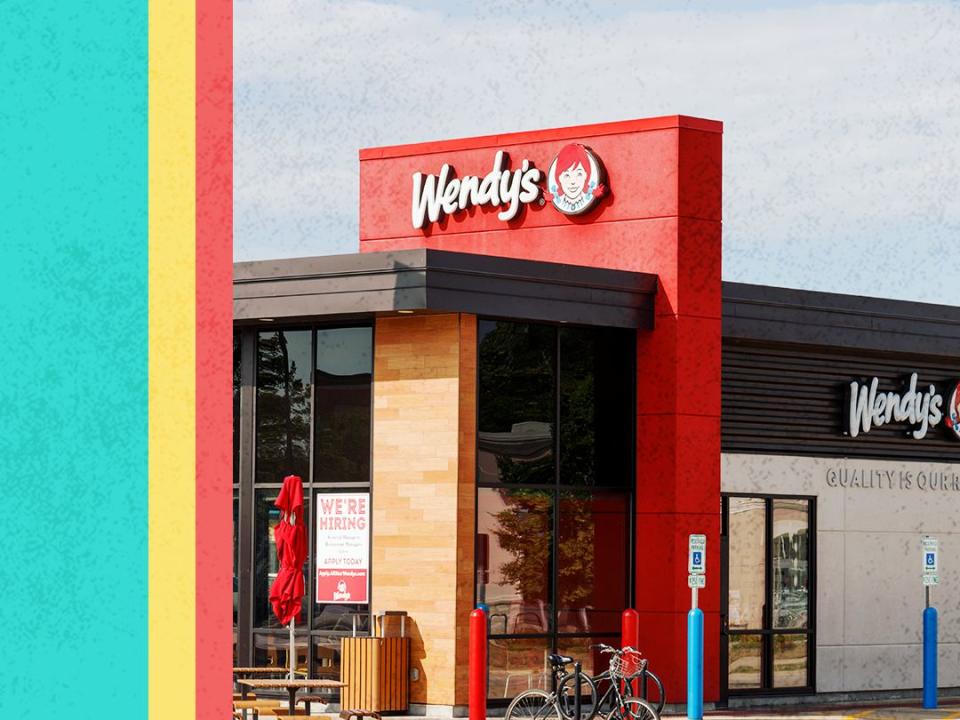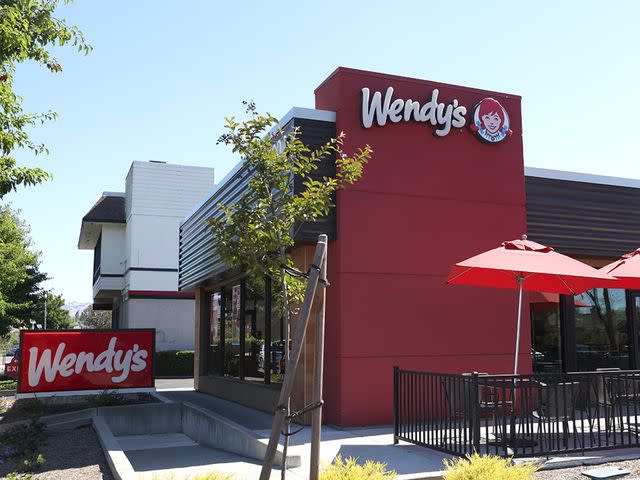Wendy’s Is Making Big Changes to Its Pricing, and Customers Are Not Happy
Prices could fluctuate based on the time of day.

Getty Images/Allrecipes
Anyone who frequents fast-food restaurants knows that prices keep going up. Items on dollar menus rarely cost $1 anymore (looking at you, McDonald’s.) Some meals at Chick-fil-A now cost $15 or more. While many fast-food chains offer limited-time deals, more and more deals are contingent on purchasing a regular-priced food item and only if the order is placed through the restaurant’s app or website—meaning customers are getting a discount, but it costs them collected personal data.
Earlier this week, the news broke that Wendy’s is looking to introduce surge pricing. In a conference call, Wendy’s CEO Kirk Tanner said the chain will “begin testing more enhanced features like dynamic pricing and daypart offerings, along with AI-enabled menu changes and suggestive selling” by early next year.
Dynamic pricing is often associated with surge pricing, a term most of us became familiar with when rideshares such as Uber and Lyft became popular. During peak demand, the cost of getting a ride can increase. The practice is also used for ticketed events such as concerts when the price of high-demand tickets increases as people try to buy them. Artists such as Taylor Swift and Bruce Springsteen have been called on the carpet by fans for ticket prices rising at the same time they’re attempting to purchase them.
Are Wendy’s Frosties or Baconators in such high demand that the chain can charge more for them during peak demand like they’re Taylor Swift tickets or rideshares in the city when it’s pouring rain?
Fans React to Wendy’s 'Dynamic Pricing'
Before we look at the surge pricing, let's look at the other term Wendy's CEO used—daypart offerings, also known as dayparting. You've probably seen this strategy on digital restaurant menus before and thought nothing of it. It's simply the practice of highlighting certain menu items at certain times of the day. For example, during breakfast hours, the menu highlights breakfast items.
Dynamic pricing, often called surge pricing, would imply that at various times during those breakfast hours, item prices could fluctuate. At the busiest time of the morning, a breakfast sandwich—such as Wendy's new Breakfast Burrito—could cost more than it does on the same day during slower times in the morning.

Justin Sullivan/Getty
Within hours of the news coming out, people took to Wendy's social media to let the chain know they were outraged by the news.
On a Wendy's Instagram post about its Breakfast Baconator, that didn't mention the dynamic pricing, fans let loose.
The first comment that pops up says, "Surge pricing? Y'all can go straight to…" (We won't finish that sentence, but you can fill in the blank.)
"Wendy's can't even make the burgers consistently worth the already out-of-line amount that's charged. I'M DONE – and I'm not waiting for surge pricing," said another angry commenter, and still another said, "Surge pricing is a great way to ensure I never order Wendy's again."
One person even went so far as to say they sold all their stock in Wendy's yesterday after the announcement. And then there was the inevitable "Wendy's is cancelled" comment.
Is all this anger warranted?
Wendy’s Clarifies Its Pricing Changes
The information came from something the CEO said during a conference call, not a press release or other public statement. Many assumed that with dynamic pricing, Wendy's menu items would increase during high-demand hours. That's not an unreasonable assumption since the things we frequently associate with the practice—rideshares and concert tickets—go up in price at peak times.
However, in a Feb. 26 statement to NBC News relayed through the Today Show, Wendy's sought to clarify what it meant by dynamic pricing, implying it's not the same as surge pricing.
"We said these (digital) menu boards would give us more flexibility to change the display of featured items. This was misconstrued in some media reports as an intent to raise prices when demand is highest at our restaurants. We have no plans to do that and would not raise prices when our customers are visiting us most," says the statement, adding that changing the menu offerings throughout the days could allow them to "offer discounts and value offers to our customers more easily, particularly in the slower times of day."
And while the company acknowledges that its initial statement to Today did not say the restaurant "would only lower prices with the new 'dynamic pricing' model," Wendy's is now saying, "Any features we may test in the future would be designed to benefit our customers and restaurant crew members."
Wendy's is now saying its dynamic pricing will only lower prices at certain times throughout the day and never raise them during peak hours. The practice is not yet implemented, so it's too soon to know if that's how it will play out. Only time will tell if the public has been hasty in deciding Wendy's canceled status.
Read the original article on All Recipes.

